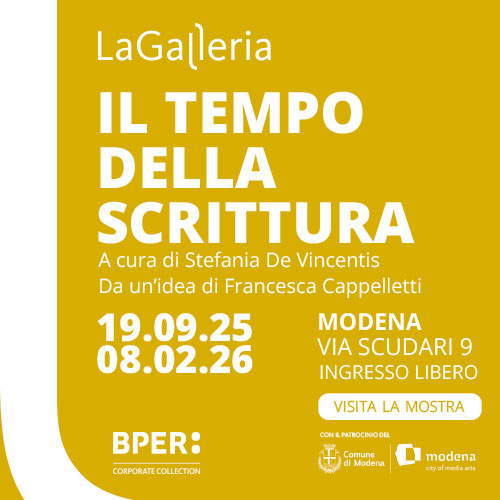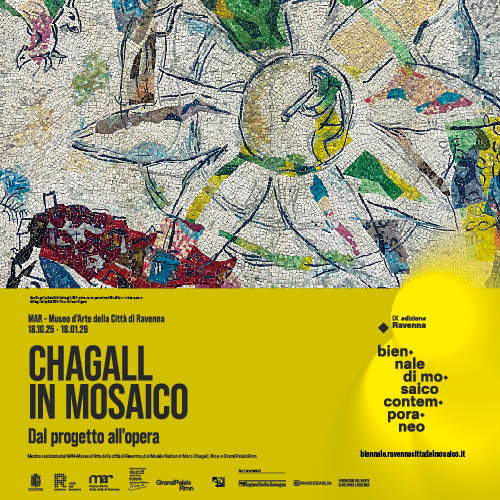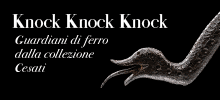
St. Bavon's Cathedral in Ghent: Gothic, Baroque and immortal masterpieces
St. Bavon's Cathedral in Ghent, the religious and artistic heart of Flanders, holds centuries of history, Gothic and Baroque treasures, the Van Eyck brothers' famous Polyptych of the Mystical Lamb, and works by Rubens. A journey into art and spirituality that interweaves faith, power and timeless beauty.
By Redazione | 01/10/2025 20:56
St. Bavon Cathedral in Ghent, locally the "Sint-Baafskathedraal," besides being the city's main religious building in Flanders is also one of the best examples of Brabantine Gothic. Its history has distant roots and begins in the 10th century: as early as 942, in fact, a first chapel, probably made of wood, stood on this site, consecrated by Transmarus, bishop of Tournai and Noyon, and dedicated to St. John the Baptist: it was the first parish of the Flemish city. Then, during the 12th century, a new church was built in the Romanesque style to replace or extend the first structure. Traces of this Romanesque phase are still visible, especially in the crypt, which still retains the typical round arches and traces of frescoes.
Later, Gent's rise to a powerful and wealthy city in the Middle Ages made possible the ambition to build ever larger and richly decorated religious buildings. Consequently, beginning in 1228, and with greater momentum from 1274, construction began on the present large Gothic building, which retained the original dedication to the Baptist.
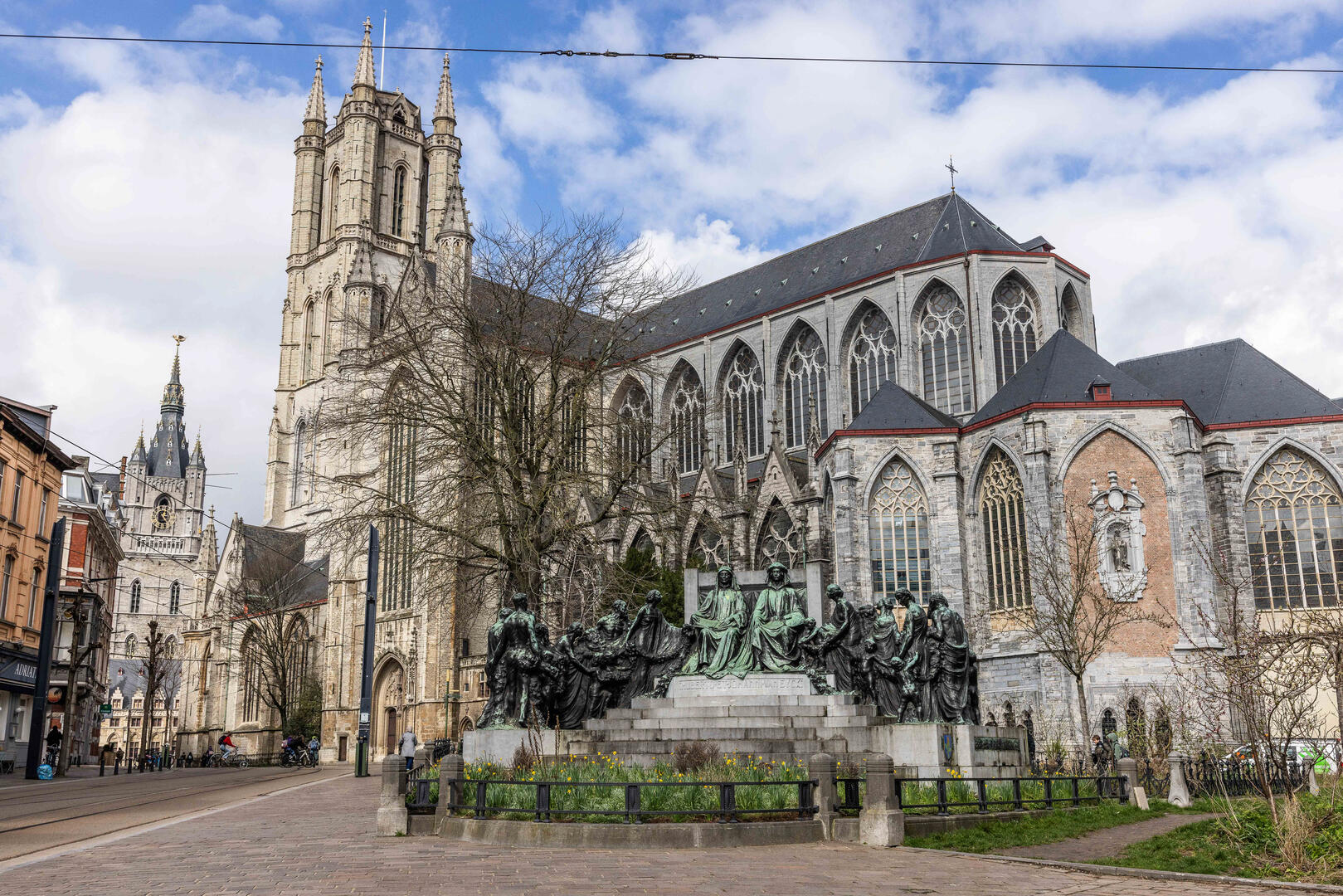
A brief history of St. Bavon's Cathedral.
Work on the Gothic transformation of what was at the time the "Sint-Janskerk," St. John's Church, lasted between the 15th and 16th centuries: the Gothic construction was in fact developed in several stages. At first a chancel was built, which took a hundred years to complete, in a style influenced by French Gothic. Then, from the end of the 13th century, the church grew steadily in height. Around 1390 an ambulatory surrounded by fourteen radial chapels was added, and later, in the second construction phase (1462-1538), work resumed with the raising of theimposing western tower-portico, which reached 89 meters in height and was completed in 1534: the tower itself is a distinctive element of the Brabantine Gothic style. Between 1533 and 1559 the high transept and piedych were erected: the structural framework was made of white stone, while the walls were built of brick. The vaults, which were already planned in the original design, were not completed until 1628, crowning the long work.
A crucial change in the building's history occurred in the mid-16th century. Emperor Charles V, who was born and baptized in Ghent, following the city's revolt that rose against him in 1539, ordered the partial demolition of the old Abbey of St. Bavon, located northeast of the city: the site on which the abbey stood would in fact accommodate a new citadel to control the city. The monks of the abbey were secularized and given the title of canons, while their chapter moved to the Sint-Janskerk, which from 1539 was rededicated to St. Bavon. Finally, with the ecclesiastical reorganization of the Spanish Netherlands, 1559 saw the establishment of the Diocese of Ghent and the church of St. Bavon was elevated to cathedral status, assuming its final name.
Although the work was considered completed around 1569, the interior continued to change, undergoing significant alterations until the 19th century. In particular, the seventh bishop of Ghent, Antoon Triest, left a profound and powerful imprint on the cathedral's sumptuous Baroque interior, which we still admire today. Triest is known to have commissioned works of the highest caliber, including Pieter Paul Rubens' famous altarpiece depicting the Conversion of St. Bavon.
The cathedral, however, was not spared turbulent events. In 1566, theProtestant Iconoclasm destroyed the precious stained glass windows offered by Charles V, Mary of Hungary and Philip II of Spain. However, the famous Polyptych of the Mystic Lamb, the masterpiece of the Van Eyck brothers preserved here, managed to survive and was saved. The structure also suffered damage from subsequent fires, notably in 1628 and 1640. The 1640 fire destroyed the flèche (spire) on the tower-portico, which was never rebuilt, leaving the bell tower at its current height of 90 meters.
Gothic majesty and Baroque splendor
The exterior of the cathedral is presented as a massive white stone structure. The facade is dominated by the tall tower-portico. The deep chancel is surrounded by radial chapels carved between the buttresses of the ambulatory. In contrast, the interior, almost as contrasting as the exterior, is bright, triumphal. The interior color effect is remarkable, given by the combination of white stone for the structural framework and red brick for the walls and vaults, along with light filtered through stained glass windows.
The chancel is separated from the ambulatory by a seventeenth-century marble enclosure characterized by black-and-white bichromy. This area holds important tombs of bishops and distinguished citizens buried in the crypt. Prominent among them is the funeral monument of Bishop Antoon Triest, a black-and-white marble masterpiece from 1652-1654 by Jérôme Duquesnoy the Younger. Other important burials include those of Cornelius Jansen, first Bishop of Ghent, Pieter Damant, and Michelle of Valois, Duchess of Burgundy. Another notable burial monument is that of Bishop Attamont (Eugeen Albert d'Allamont), depicted in conversation with a skeleton, by Jean del Cour (1667-1670).
Members of the Chapter of St. Bavon, established here in 1539, have stalls in the chancel, where the episcopal throne is also located. The Chapter is still active today, with about 20 members who are mainly involved in lending luster to liturgical celebrations and performing diocesan administrative duties.
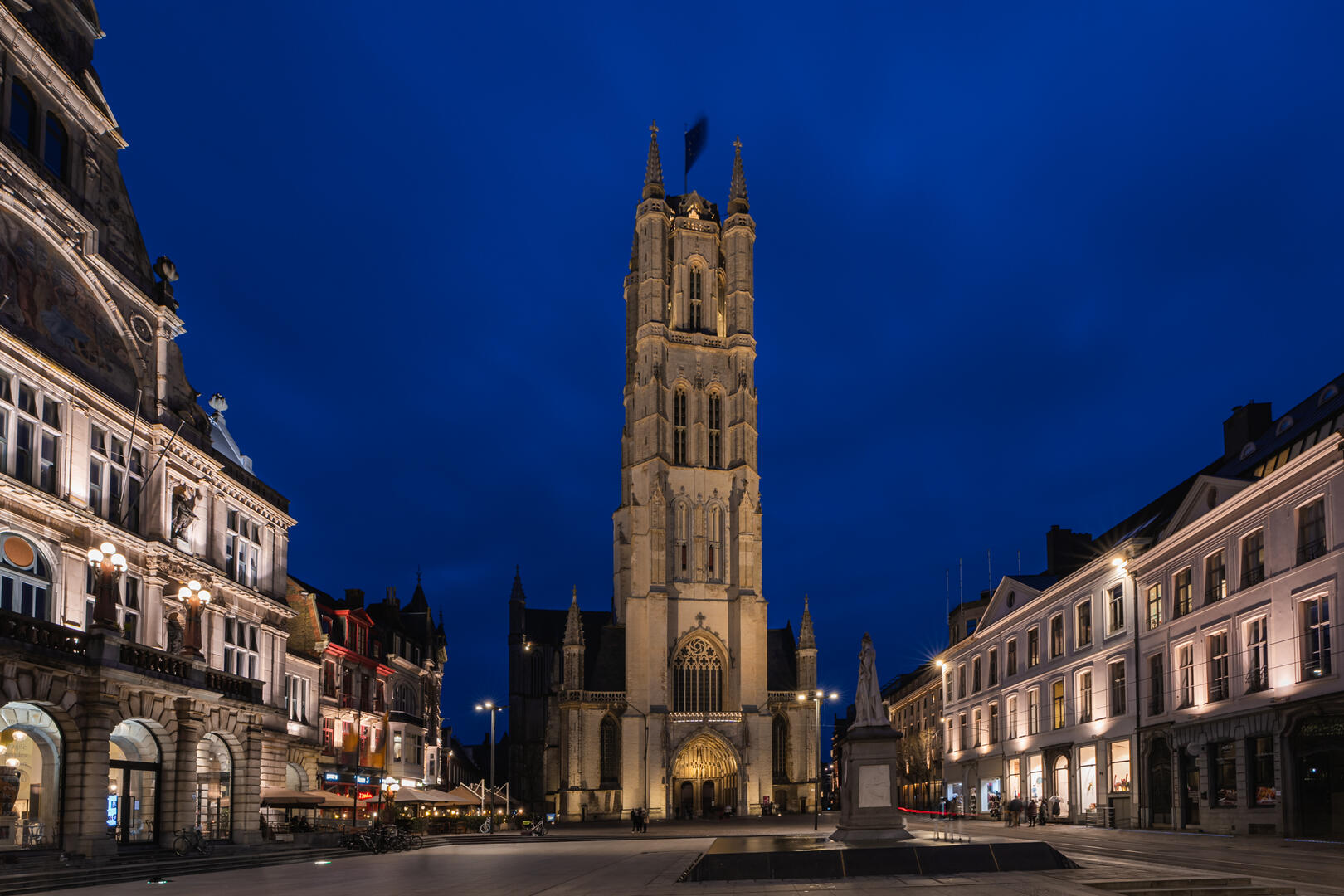

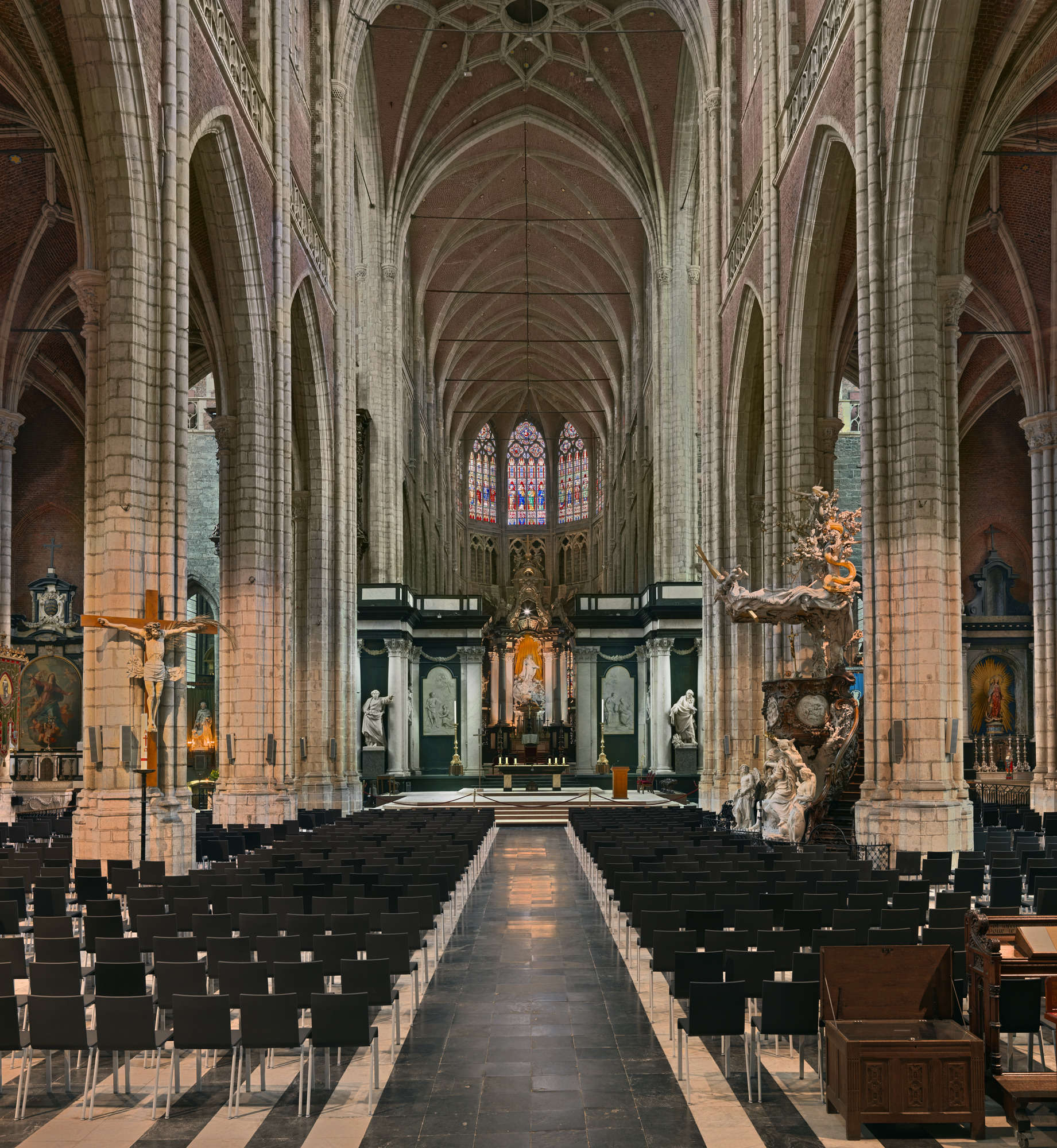
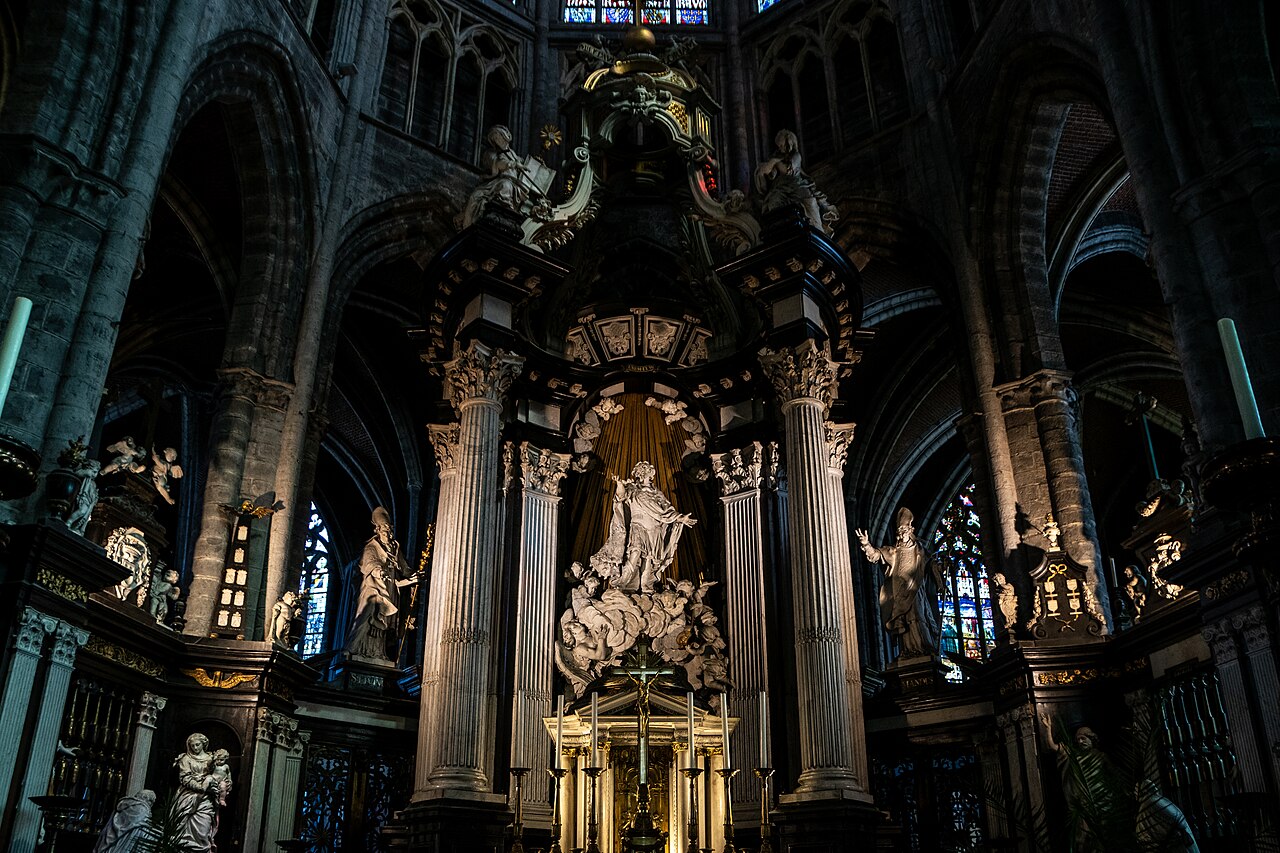
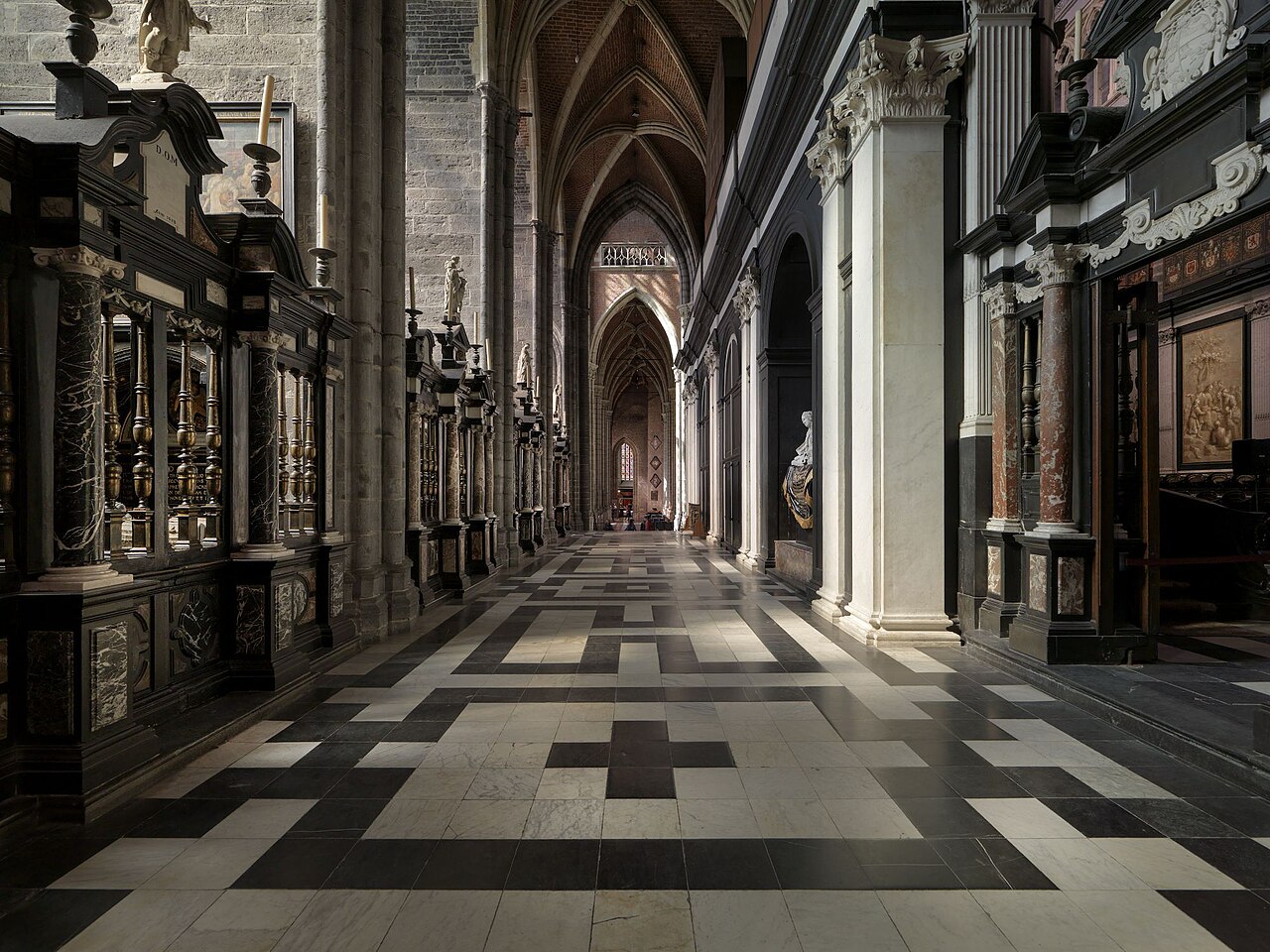
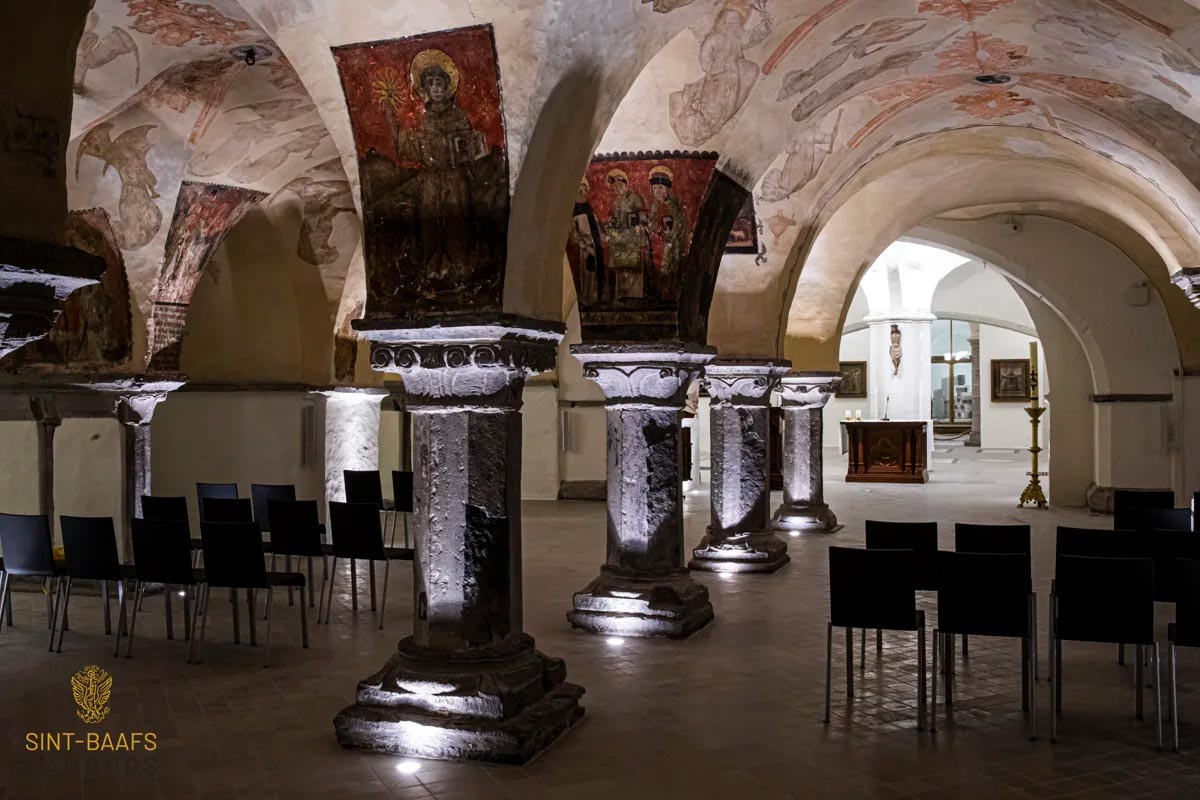
The cathedral's masterpiece: the Polyptych of the Mystical Lamb
The absolute masterpiece and most famous custodian of St. Bavon Cathedral is undoubtedly the Polyptych of the Mystic Lamb, a fundamental work in the history of Western art. Commissioned by Gent patricians Judocus Vijd and Elisabeth Borluut, the polyptych was begun by Hubert van Eyck (Maaseik, c. 1366 - Gent, 1426) and completed in 1432 by his brother Jan van Eyck (Maaseik, 1390 - Bruges, 1441). This monumental polyptych, consisting of twelve compartments (originally twenty oak panels), was first displayed on May 6, 1432 in the chapel of Joos Vijd and Elisabeth Borluut inside the cathedral.
The work is considered a turning point because of its pioneering use of oil painting, a technique that Jan van Eyck brought to perfection. The application of semi-transparent layers gives the painting an unprecedented sense of depth and perspective and incomparable realism. At the center of the work is theLamb that gives the entire work its name, a symbol of Christ offering his blood for the redemption of humanity.
A recent extensive restoration has revealed Van Eyck's original painting, hidden by centuries of hardened varnishes and repainting. This restoration also made it possible to decipher a hidden inscription on the honor drapes behind Mary and John the Baptist. X-ray analysis revealed Lubrect's name (Hubert) and the date of his death, suggesting that Jan Van Eyck painted the upper register as a brotherly tribute to Hubert.
The history of the polyptych has been extremely turbulent. It has been stolen or removed from the cathedral as many as seven times over the centuries, making it one of the most stolen paintings in history. In 1794, for example, French soldiers took the central panels to Paris, which were returned to Ghent only in 1815. A famous episode occurred in 1934, when two side panels were stolen: only one was recovered, and the panel known as that of the "intact Judges" is still missing, replaced by a copy. After World War II, the work returned to the Vijd Chapel, only to be transferred to the Villa Chapel in 1986.
A new Visitor Center (more here), located in the crypt, opened in 2021 and built by the architectural firm Riessauw, has become the work's home and allows visitors to discover the tumultuous history of the cathedral and the polyptych. The new visitors' center at St. Bavon Cathedral combines historical heritage with modern construction techniques, and is a functional and sustainable facility with a focus on integration into the historic context. Advanced techniques were used in its construction to reinforce the foundations and supporting structures, which are essential for the protection of the centuries-old building. The use of innovative stabilization techniques ensures that the cathedral can withstand visitor loads and the impact of time. To this end, high-quality materials compatible with the existing building were chosen to avoid damage. In addition, climate control system in the center is designed to better protect the interior and the artworks on display.
In the Visitor Center, visitors are given the opportunity to use augmented reality glasses, thanks to which they can travel back in time to the cathedral crypt and experience the history of the polyptych and the cathedral as if they were taking part in the events (both the masterpiece and the imposing building are reproduced in great detail). Families with children can also participate in a guided tour of the visitor center. The audio guide is available in Dutch, French, and English and is suitable for children ages 6 and up and is a fun way to find out more about the Polyptych of the Mystic Lamb and its history.
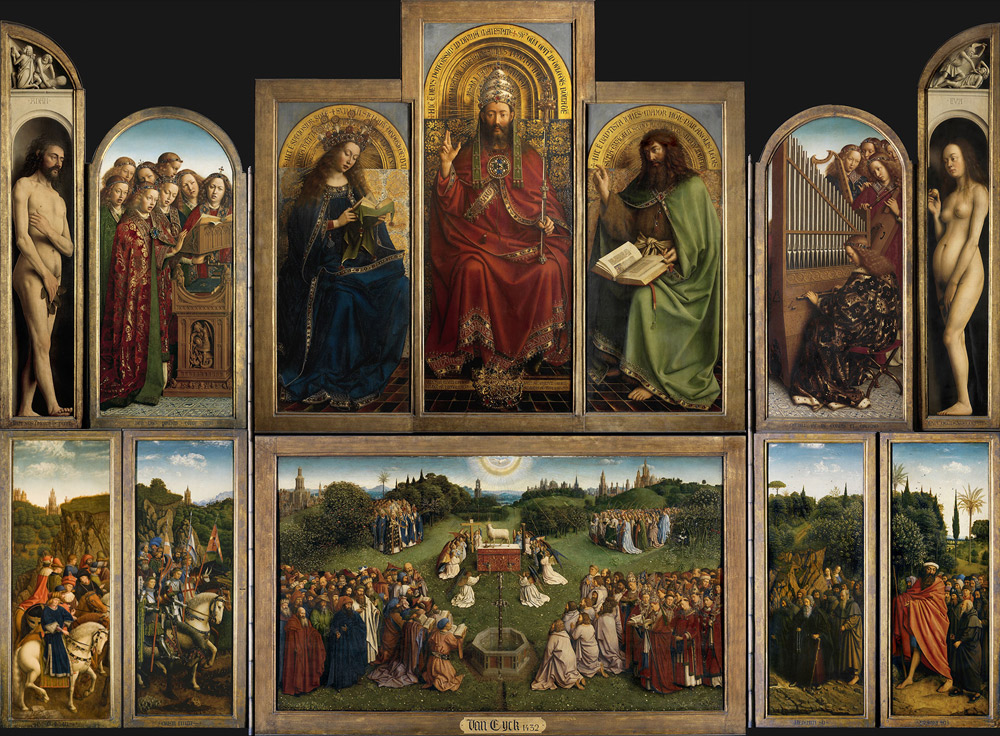
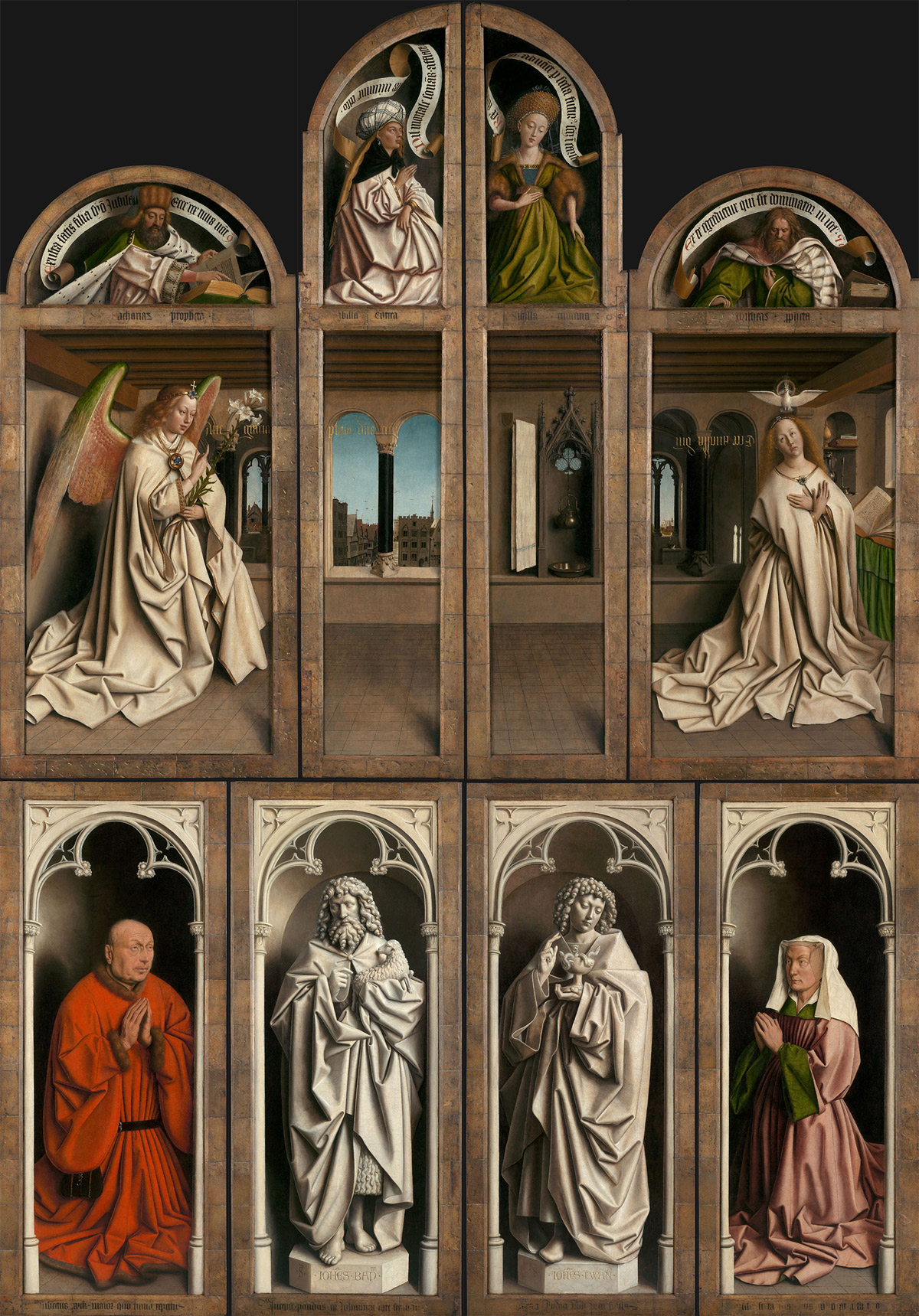

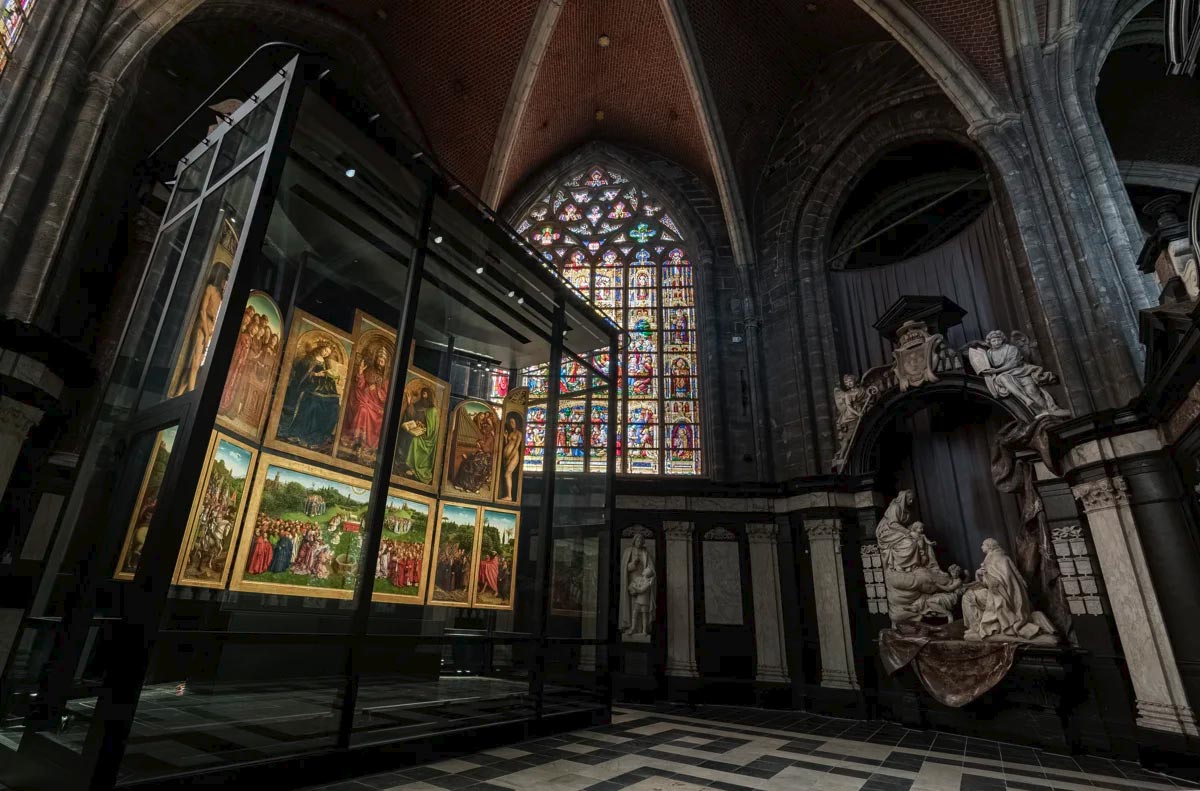
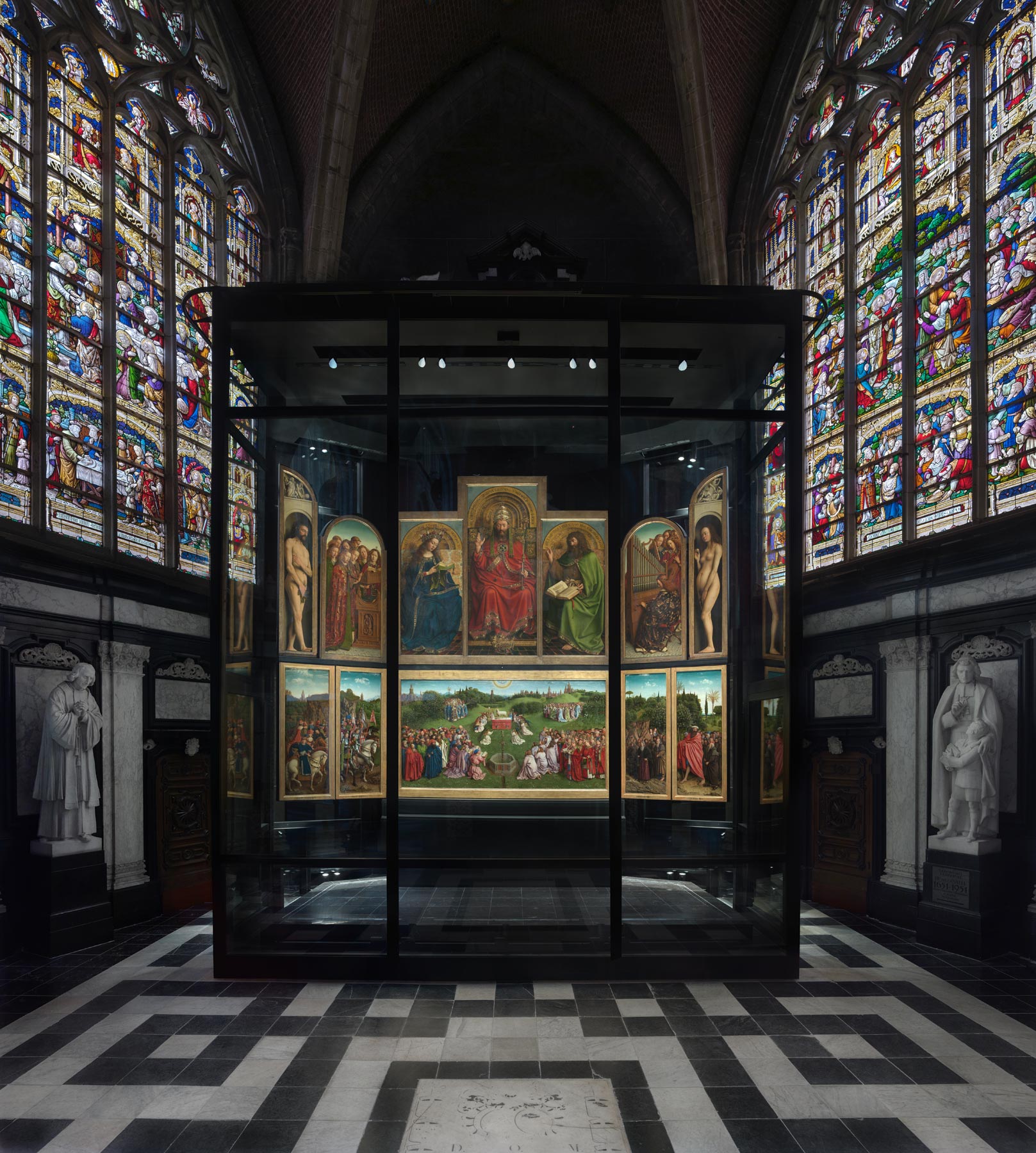
The Cathedral's other art treasures
Although the Mystical Lamb is its most famous jewel, St. Bavon Cathedral is a veritable collection of art treasures of the highest order. Most of these masterpieces were commissioned after the establishment of the bishopric in 1559.
Among the most important paintings is the Conversion of St. Bavon (or The Entrance of St. Bavon into the monastery of Ghent), a monumental work painted by Pieter Paul Rubens (Siegen, 1577 - Antwerp, 1640) between 1623 and 1624. The work, as mentioned, was commissioned by Bishop Antoon Triest for what was the main altar. The painting tells the legend of St. Bavon, who, after a dissolute life and the death of his wife, repented and gave his goods to the poor. The scene shows the steward distributing the wealth, while Bavon, in armor, kneels to be received by St. Amandus.
Another significant piece is the Calvary Triptych, attributed to Justus of Ghent (Joos van Wassenhove; Ghent, c. 1430-c. 1480) and dated 1465. The cathedral also houses works by other Flemish masters, such as Frans Pourbus the Elder (Bruges, 1545 - Antwerp, 1581), who created the Polyptych of Jesus among the Doctors in 1571, as well as fourteen panels illustrating the History of St. Andrew. Other artists found in St. Bavon's Cathedral include Gaspar de Crayer, with paintings such as the Beheading of the Baptist (1658), Lucas de Heere, author of theMeeting of the Queen of Sheba and King Solomon (1559), an allegorical work where Solomon represents Philip II of Spain, and Antoon van den Heuvel.
The cathedral also holds a remarkable collection of liturgical furnishings and treasures. The Baroque pulpit, made between 1741 and 1745 by Laurent Delvaux (Ghent, 1696 - Nivelles, 1778) of oak wood, black and white marble, is one of the most eye-catching elements and considered one of the best examples of its kind. The majestic high altar is made of white, black and red marble. In addition, the candlesticks on the high altar are splendid works executed in 1525 by Benedetto da Rovezzano (Benedetto Grazzini; Pistoia, 1474 - Vallombrosa, 1554), originally created for Henry VIII of England.
Among the oldest and most valuable pieces preserved is theEvangelarium of Livinus, a 9th-century manuscript containing the four Gospels: it is one of the oldest books preserved in Belgium. This object, along with others, was transferred from Sint-Baafsabdij (St. Bavon Abbey) when it was suppressed in 1536. The treasury also includes important reliquaries, such as that of the head of St. John the Baptist and the reliquaries of St. Macarius. The collection of embroidered liturgical vestments is recognized as one of the most important in the country, with pieces from the 15th to 20th centuries.
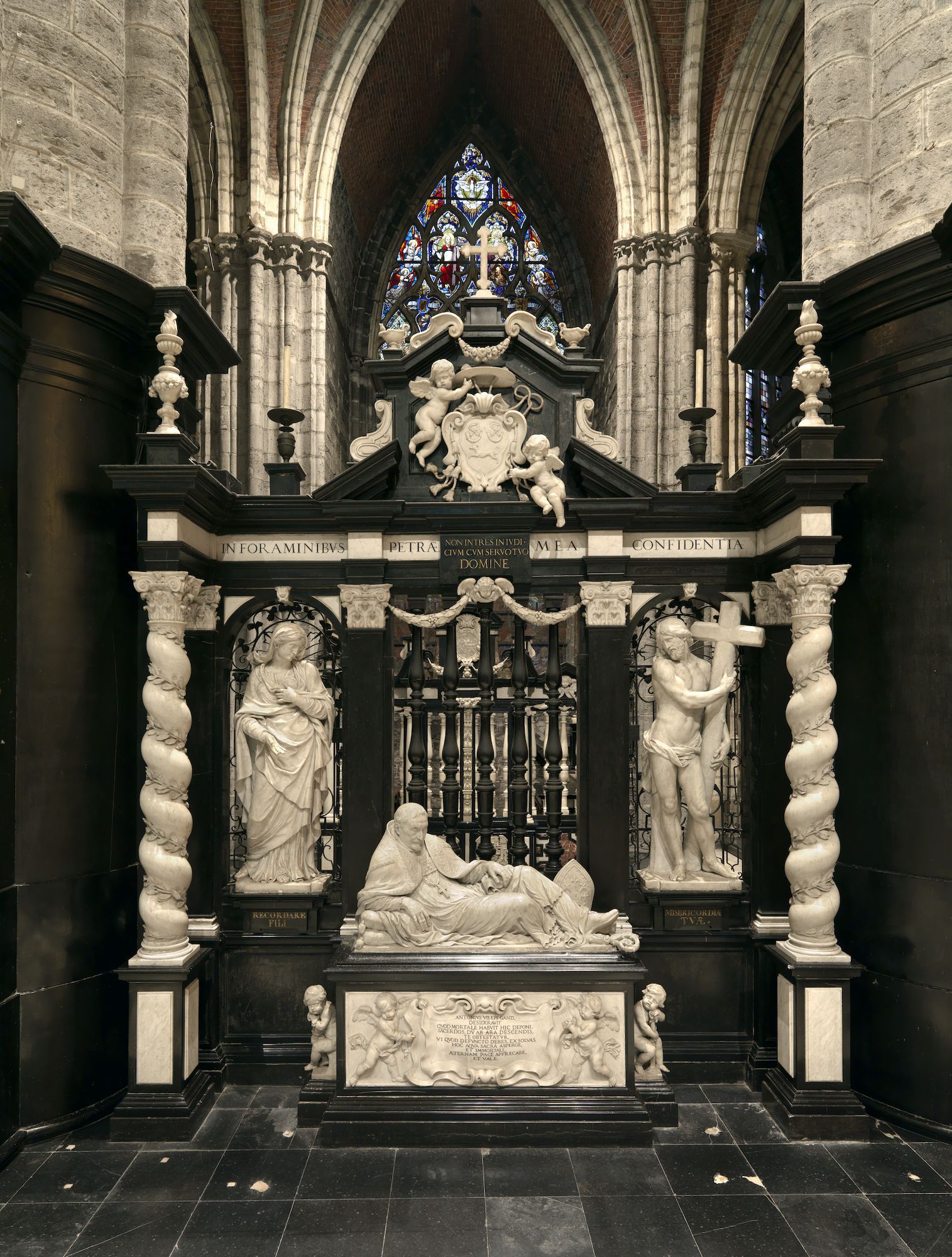
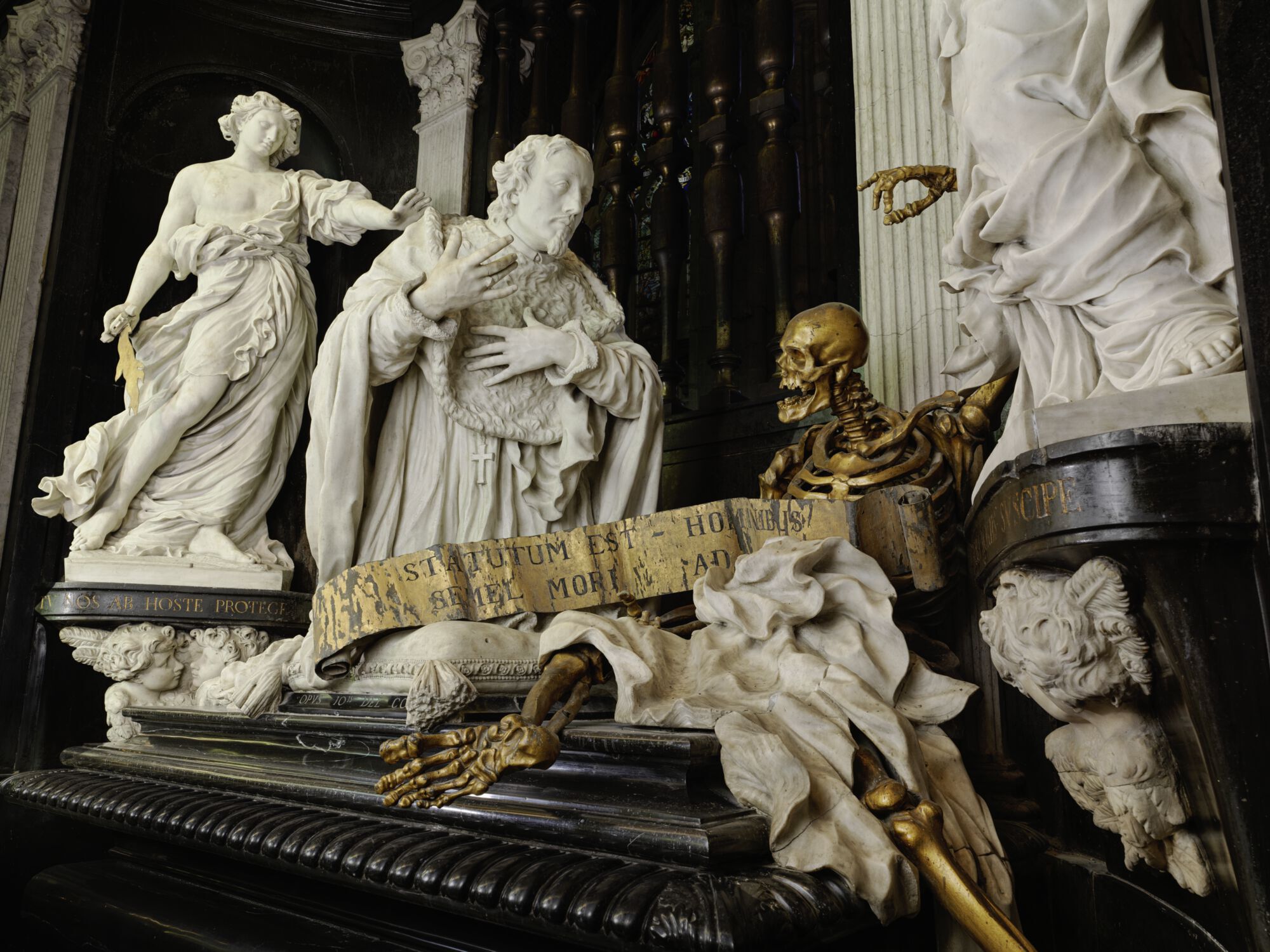
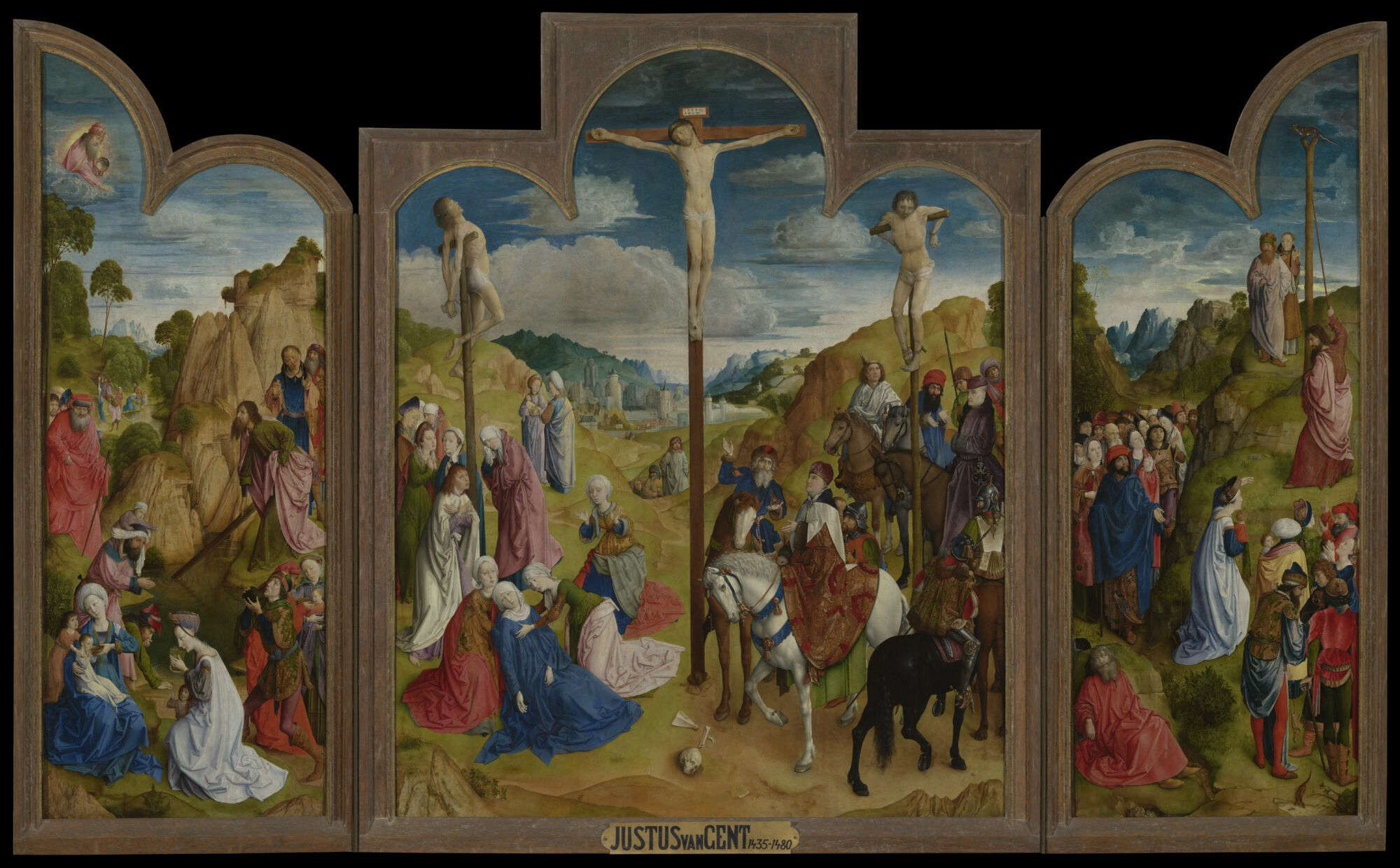
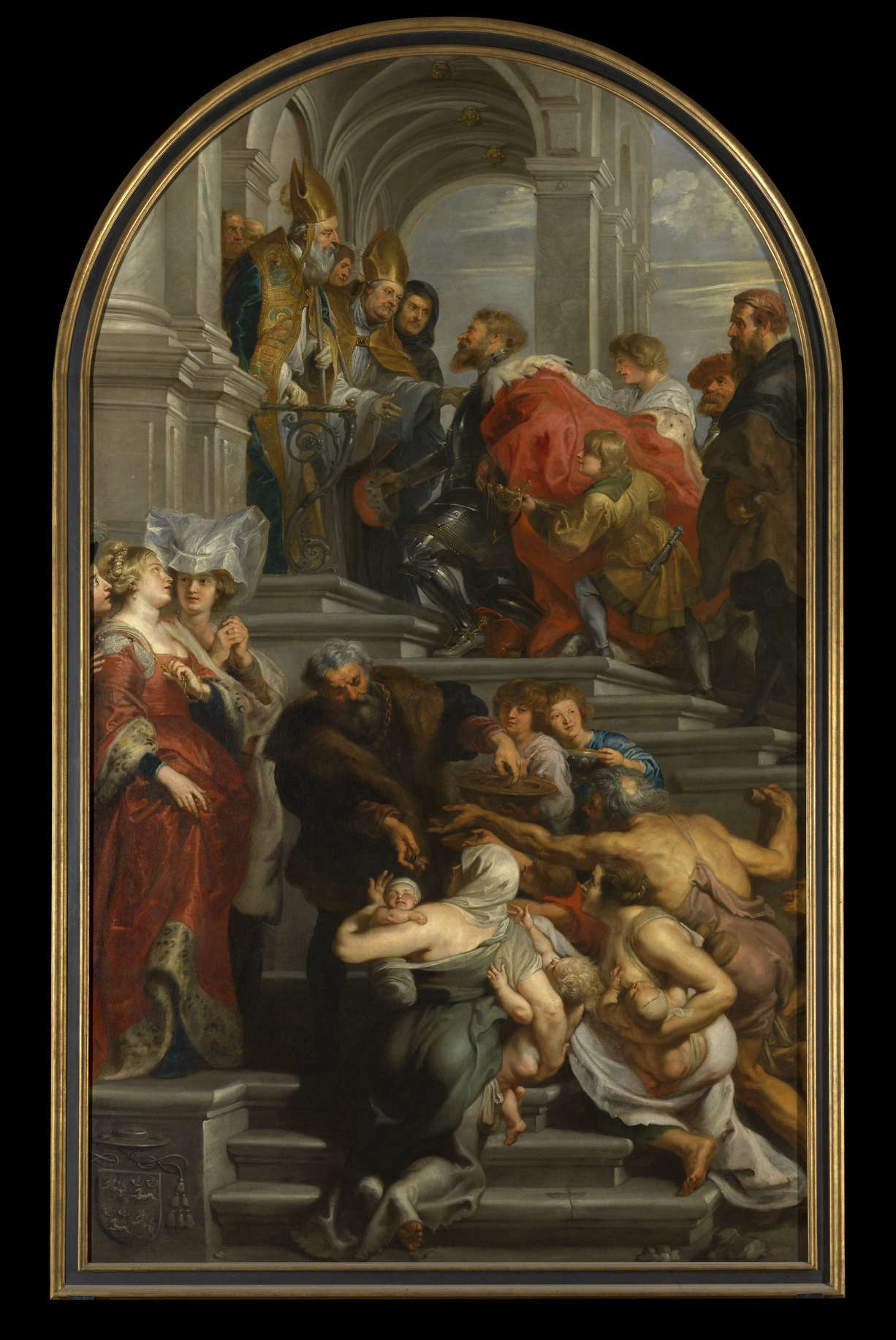
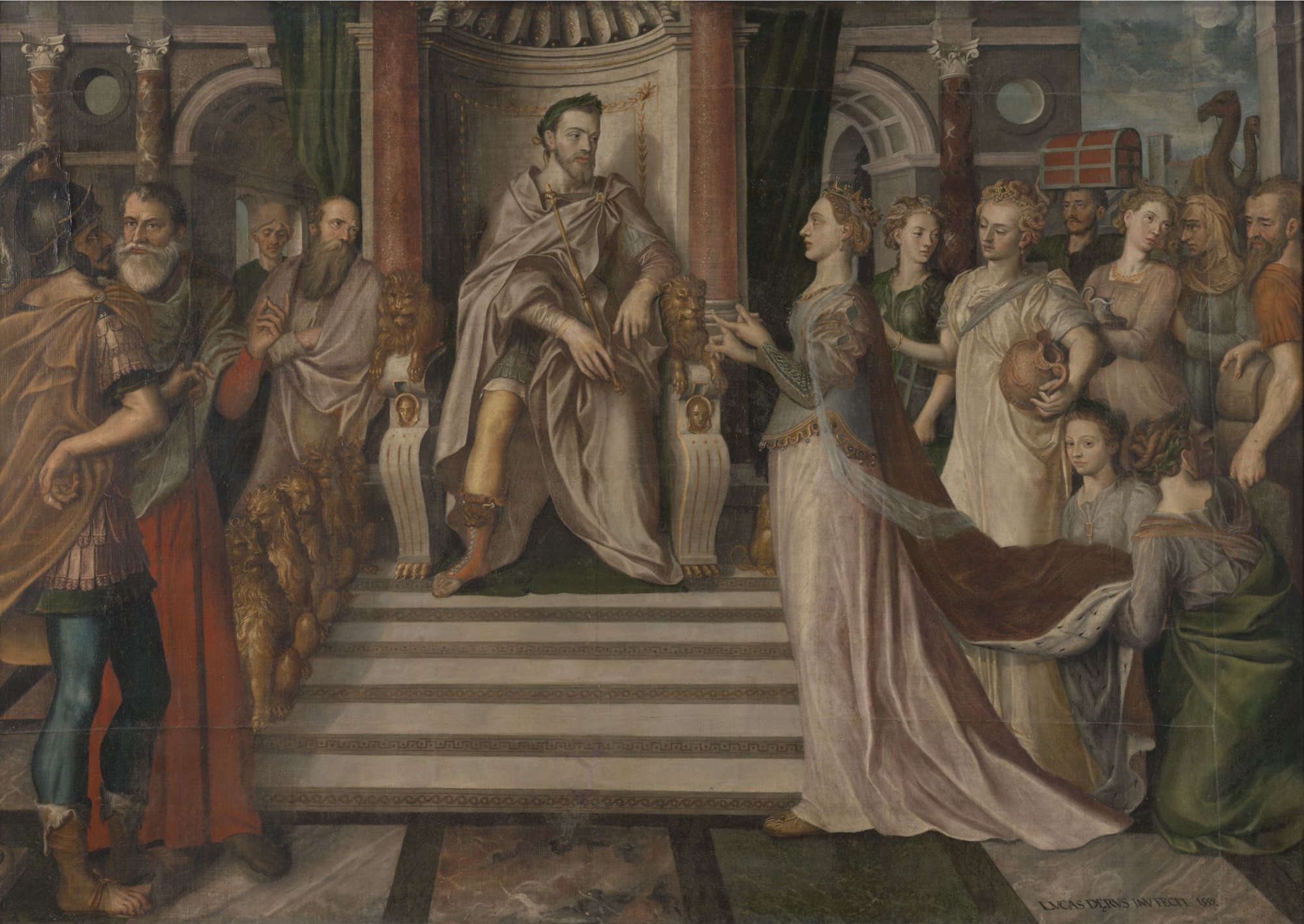
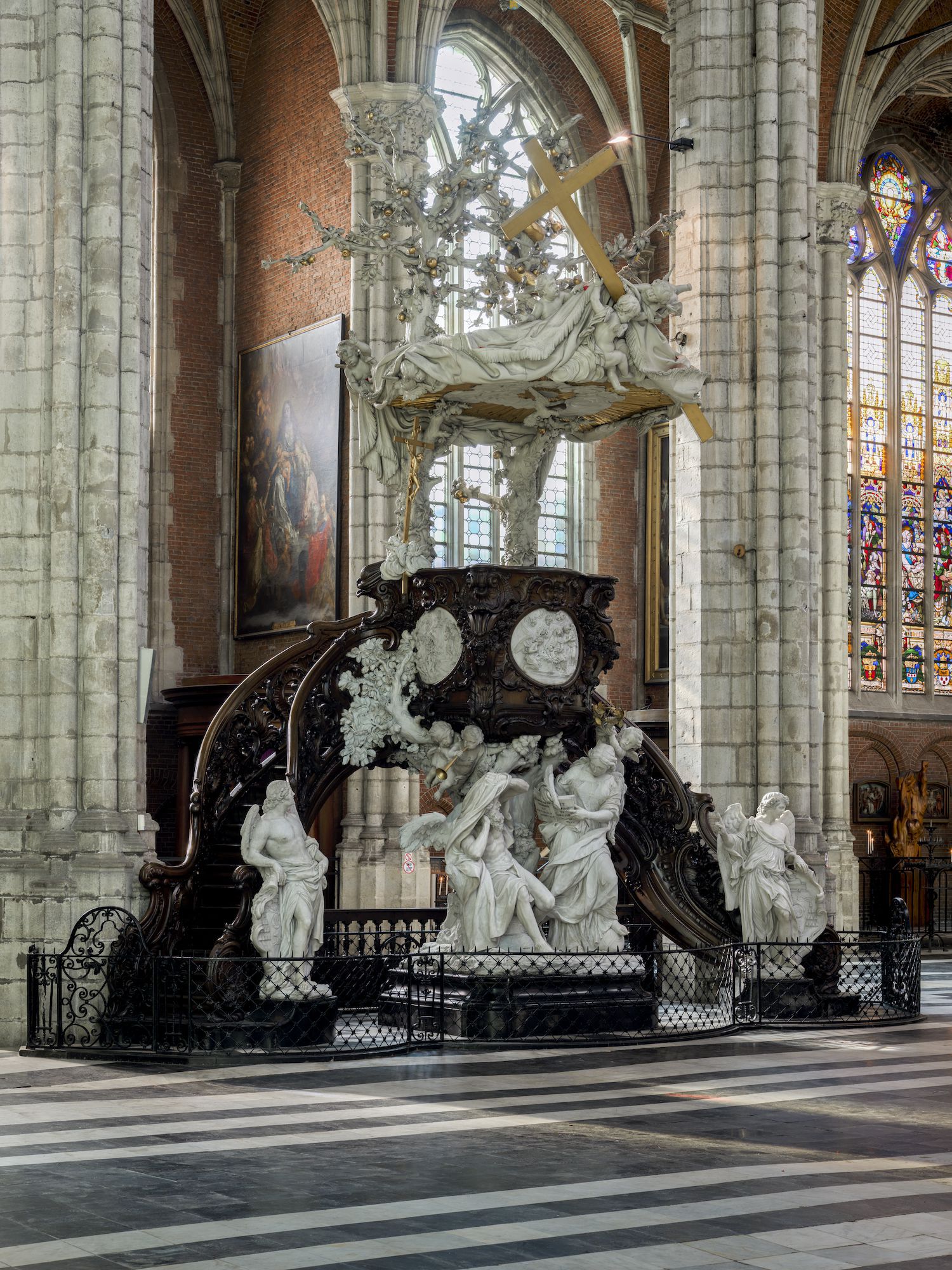
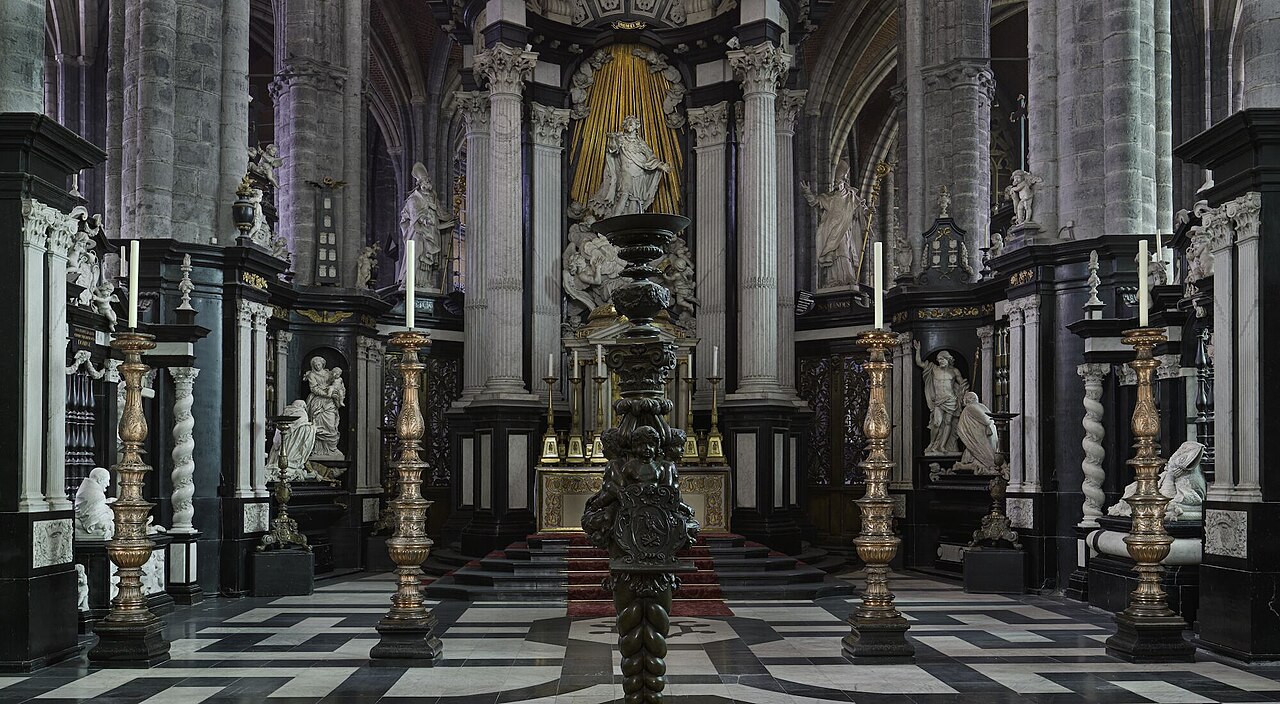
The Organ: the largest in the Benelux.
St. Bavon Cathedral is also renowned for its organs. Themain organ, located in the upper church, is the largest in the entire Benelux. The instrument is divided into two distinct parts and boasts five manuals plus pedalboard. The oldest part, known as the Kruisbeukorgel is located in the transept, hence the name (Kruisbeukorgel means "transept organ"). It was built between 1653 and 1655 by Louis Bys and Pierre Destrée of Lille, again commissioned by Bishop Antonius Triest. This instrument, renovated in 1767 by Lambertus Benoit Van Peteghem, responds to the first two manuals and pedalboard and has 48 registers.
The second part, the choir organ(Koororgel), is more modern and is located above the choir. It was built by Johannes Klais for the 1935 Brussels World's Fair, where it won an international prize, and was later purchased by Bishop Coppieters. With its 90 registers, responding to manuals III, IV, and V, it combines with the 48 registers of the ancient organ for an impressive total, confirming Ghent's record as the custodian of the largest organ in the region.
Restoration and accessibility
The monumental building has required major conservation efforts. An extensive restoration campaign began in the summer of 2005, planned in eight phases with an expected duration of at least fifteen years and an estimated cost of more than 25 million euros, mainly aimed at preserving the structure. A crucial phase of this work focused on the 90-meter-high tower, whose restoration began in early 2013 and required the installation of scaffolding for at least four years.
Today, the cathedral is fully accessible to the public. However, although admission to the building is free, there is a charge to visit the famous Mystic Lamb in the newly opened visitor center in the crypt. The building has been made fully accessible to people with disabilities, including wheelchairs. For visitors who are blind or visually impaired, a bronze tactile maquette of the cathedral, 150 times smaller than the original, is placed at the entrance, complete with Braille text tracing the cathedral's history.
The present St. Bavon Cathedral no longer serves as a parish for the local community, as the parish has been merged with others (Sint-Michiels and Sint-Niklaas) and St. Michael's Church now serves as the main parish church. However, the Sint-Baafskathedraal has remained the mother and main church of the Bishopric of Ghent. Its intricate history, which is intertwined with the power and uprisings of the city of Ghent, and the incredible artistic heritage it houses make it an essential stop during an art trip to Flanders.


